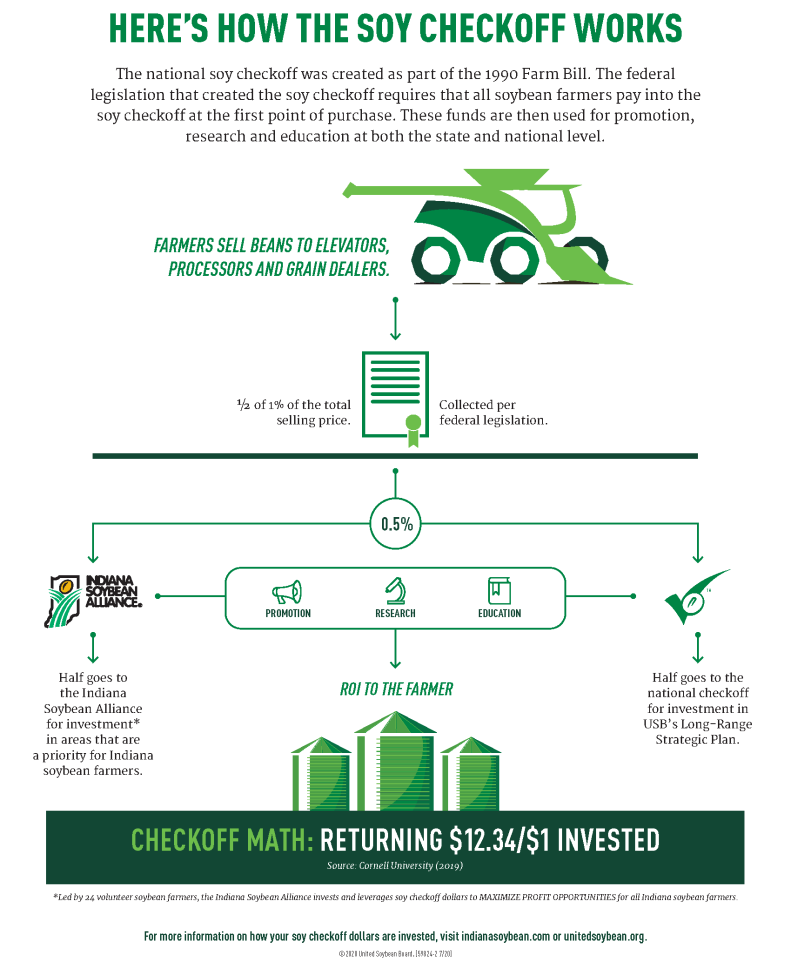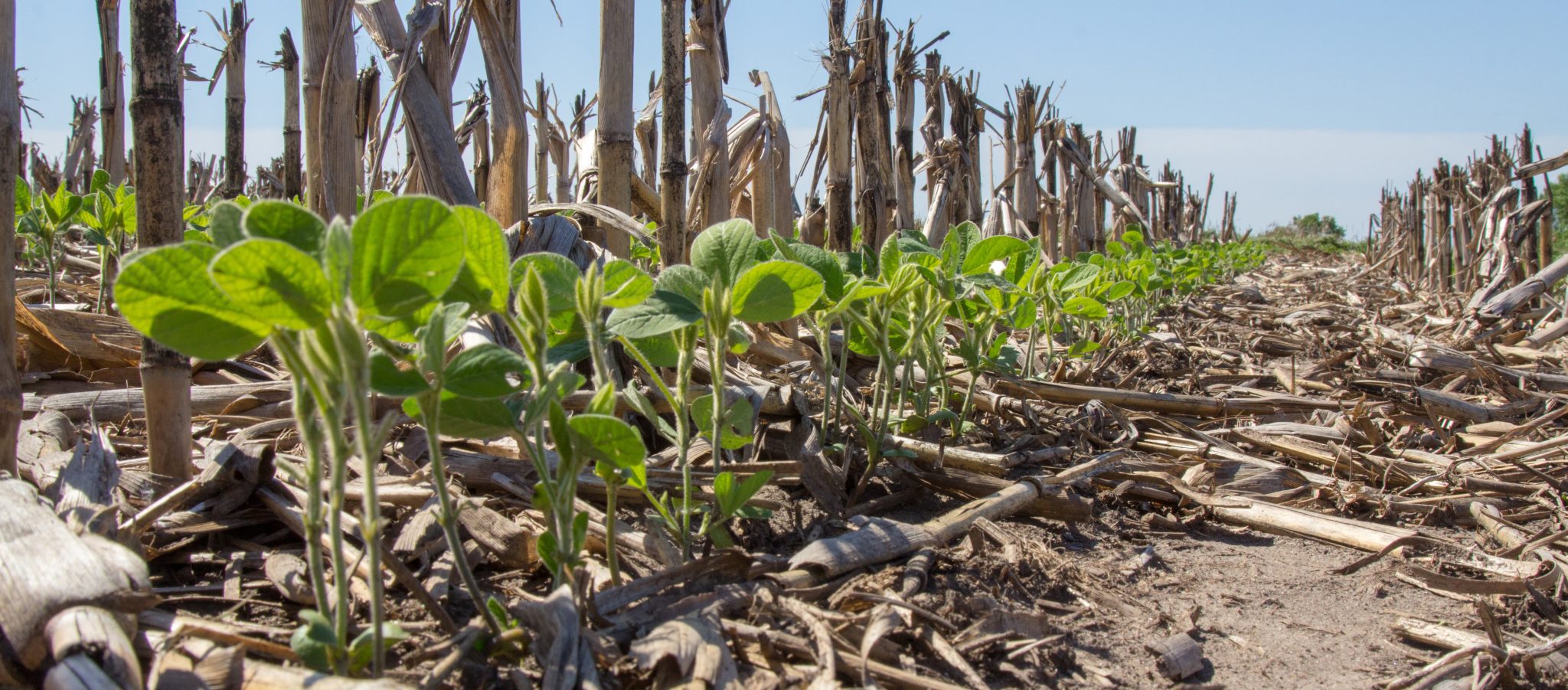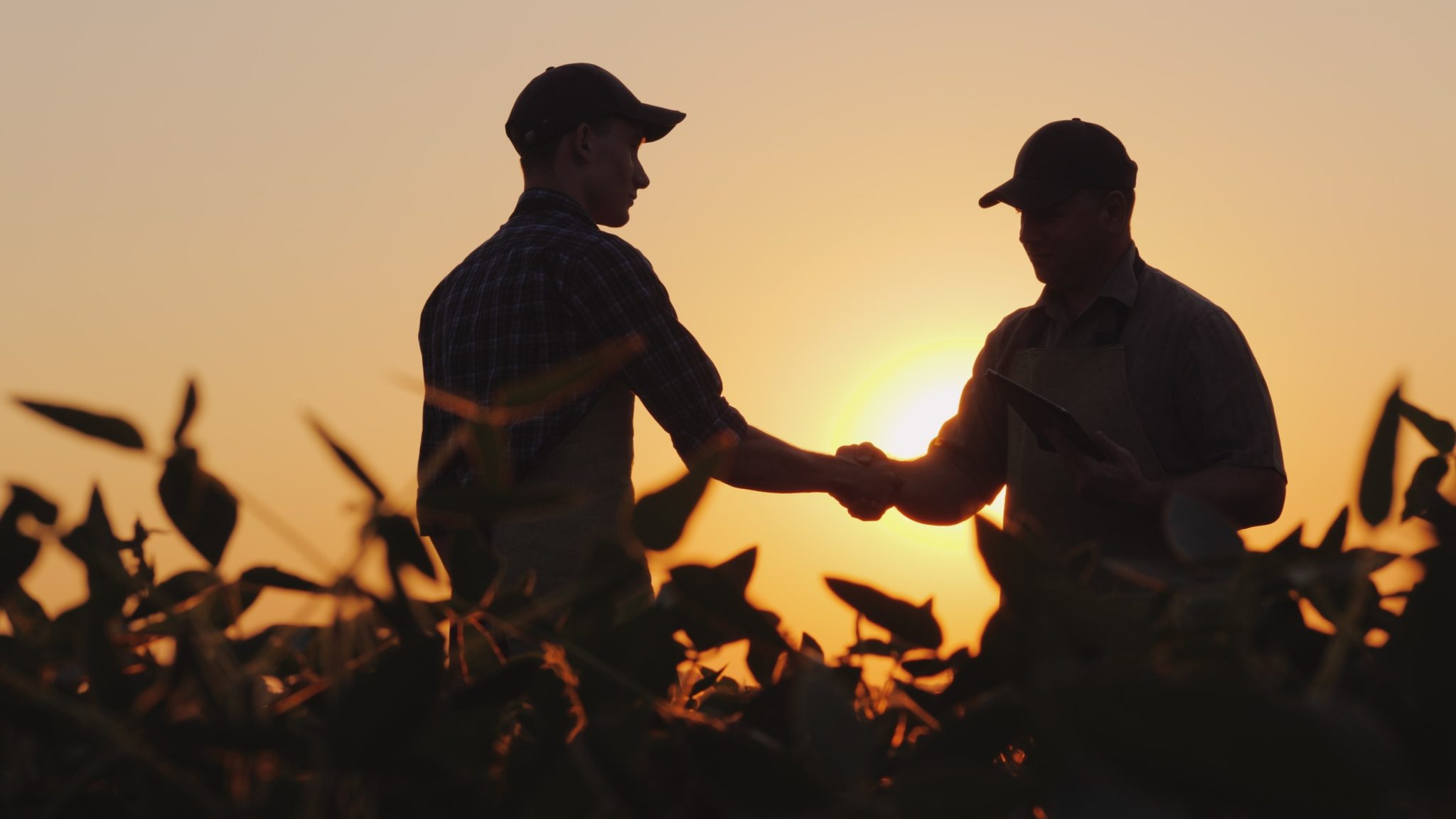The national soy checkoff was created as part of the 1990 Farm Bill.
The Act & Order that created the soy checkoff requires that all soybean farmers contribute 0.5% of the net market price for each bushel of soybeans sold into the soy checkoff at the first point of purchase.

Indiana’s soybean checkoff supports research, promotion and educational programs to increase demand, expand markets and find new uses for soybeans.
Under its current strategic plan, Indiana Soybean Alliance puts Indiana soybean checkoff investments to work into four strategic focus areas:
block_8425ff0732e03206700c65f0b09ebb47
block_4bbde4ddd74870334059aa4acd54f355

Sustainability
Implementing environmental, community and economic sustainability programs and resources.
block_549082b5f2a9c649667f805dd5a91098

New Uses and Value Creation
Finding new uses for soybeans and increasing the value of soybeans grown in Indiana.
block_e5a158d494a9df9cbf8a90204181d85e
How are checkoff funds used?
Checkoff funds are used for promotion, research and education at both the state and national levels. By law, no checkoff dollars can be used to fund legislative activities, so ISA generates non-checkoff funding in a variety of ways like our farmer membership and corporate partner program.



